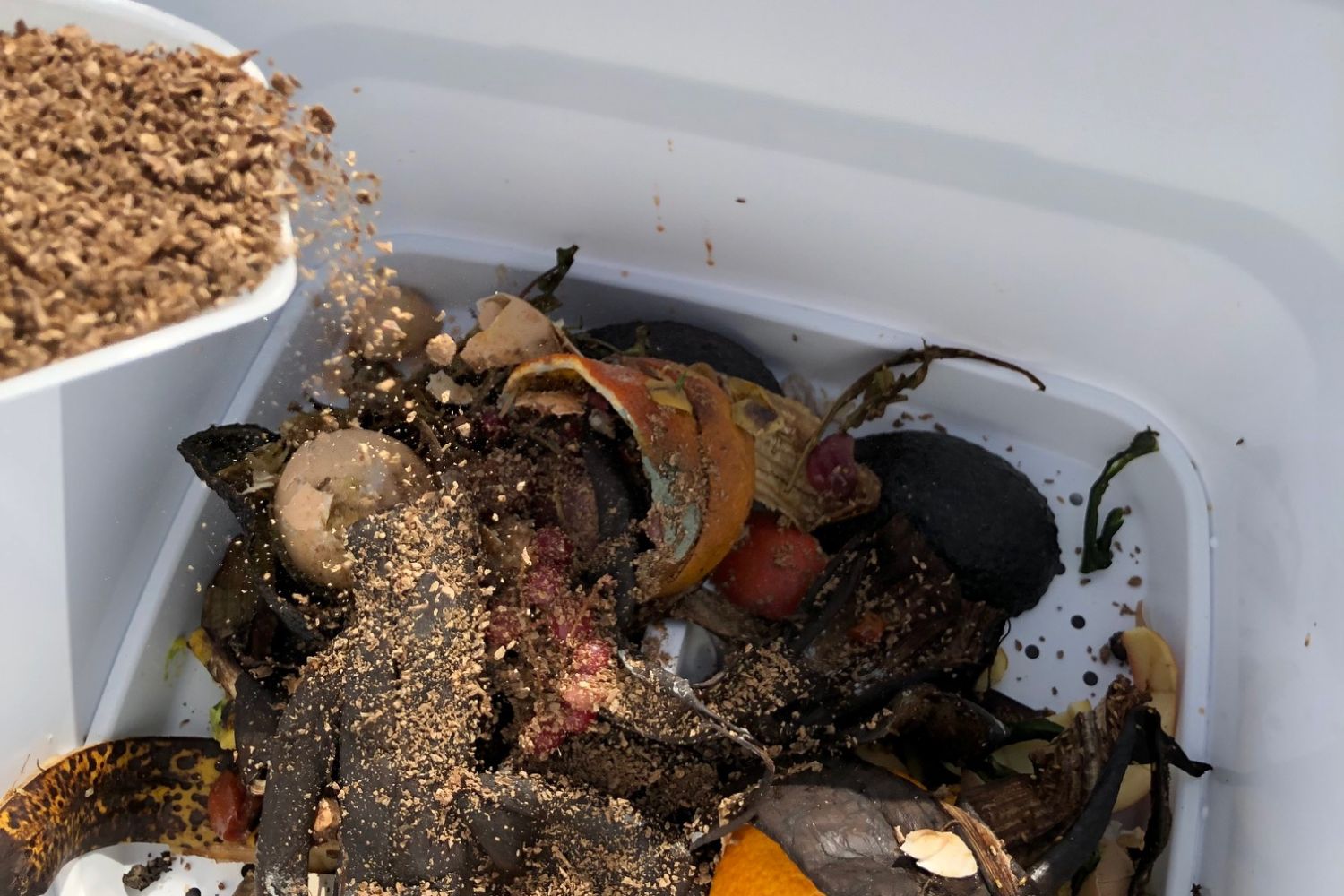How can I promote the formation of good bokashi?
Vegetable waste should be well chopped so that the conversion is uniform, because larger pieces take longer for fermentation. If little organic material comes together each day, it can be stored temporarily in a cool place for a few more days. With the litter MikroVeda dry Bokashi ferment recommended for composting and the appropriate ceramic powder, a fermentation process begins in the Bokashi kitchen bucket, in which numerous effective microorganisms prevent the development of rot and unpleasant odors. Thus, by introducing diverse regenerative microorganisms, you ensure a good microbial start to your organic waste fermentation from the outset.
If organic waste is stored temporarily, it is recommended to sprinkle MikroVeda Garden Bokashi over it until it is worth filling the Bokashi bucket. However, it is better to put all waste into the bokashi bucket as fresh as possible, before decomposition through rotting can even take hold.
In Asia, where Bokashi originated, 1/3 rice bran, 1/3 rice husk and 1/3 chicken manure are mixed with about 30 liters of MikroVeda FARMING SUPERACTIVATED per 100 kilograms of mixture. The well-mixed material is tightly compressed and fermented in the absence of air (anaerobic). The final product is used as fertilizer (300 grams/square meter). Deviating from the original Asian recipe, we describe below the self-production of a vegan Bokashi in the kitchen and in the garden barrel. Without the drifting and hygienically not always perfect chicken manure, we thus produce a slow-acting natural material. With it, we feed the soil life and our plants in a completely natural way.
What does finished Bokashi actually look like?
The finished kitchen Bokashi still shows the original structures of the organic material. Only the fresh color of the vegetable waste has turned into a pale gray-brown. Sometimes a white fungal web forms, spreading like a net. These fungal threads are, as with compost, a desirable
sign of good conversion. Good Bokashi smells sweet and sour as well as the leachate that forms daily.
When has the bokashi making process failed?
If it smells foul, oxygen has been at work, the fermentation process could not proceed properly. In this case, the bokashi should be composted outside and not applied directly to the plants.
How to fill the bokashi bucket and make bokashi (step by step):
- Fill each layer of fresh vegetable waste 10 to 15 inches high.
- Sprinkle with MikroVeda GARDENBOKASHI of the dry variety (about a filled handful of litter). It gets fermentation going and optimally binds the leachate.
- Crush vegetable waste layer together so that all air is squeezed out. With oxygen, decomposition would take place by rotting (oxidation leads to foul odor, which is certainly not desirable in the house).
- The container should now be sealed airtight and the bucket placed in an evenly tempered place, without blazing sun. You can store the bokashi kitchen bucket under the kitchen counter, in the kitchen cabinet or in the storage room. Room temperature is recommended, no direct sunlight. In winter you should not store it on the balcony, because it can be damaged due to low temperatures.
- Drain the leachate every two days at the latest. If it stays in the bucket longer, it will start to stink.
- Once the bucket is full, the bokashi should be stored briefly for another 14 days before it can be applied fresh as fertilizer. It is also important to drain the liquid every two days during the short storage, as leachate can still form well.
How can I store finished Bokashi longer?
When more Bokashi has accumulated than is needed, Bokashi can be stored. When storing finished Bokashi, however, there are a few things to keep in mind, depending on whether I want to store it in the basement, in a bag or in a pit. Basically, all material should be thoroughly sprayed again with MikroVeda TERRA before long-term storage. This way, the storage process is further supported microbiotically and valuable microorganisms are already introduced, which will later optimally promote the soil once the Bokashi has been used at its destination.
In the cellar: At a cellar temperature between 7 and 12 degrees Celsius, Bokashi can be stored for up to one year.
In the sack: For storage in the sack, place the airtight, sturdy foil sack upside down, well closed, so that the closure sits snugly on the bottom and no air can enter. The microbes then fall into a kind of sleep.
Storage in the pit: dig a hole 30 to 60 centimeters wide and deep. Fill in the bokashi. Spread a shovel of soil over it for each layer (10 centimeters) and tamp it down like sauerkraut. After six weeks, this deposit will be so grounded that it can be used in the garden soil.
In a clay pot: Bokashi can also be stored in a clay pot – upside down. In this way, you can optimally enrich the place in the greenhouse or vegetable patch with nutrients in advance, where you will soon be planting.
I have no time, no space or I just don’t want to succeed. Can I buy Bokashi?
If you are interested in Bokashi but don’t have the space or place to make Bokashi yourself, you can purchase good Bokashi. Pay attention to a raw material selection according to biological and ecological standards as well as to a microbiotically high product quality. Indicate for this and already large microbiotic quality differences you can recognize from the multi-bio cultures published by the individual manufacturers, which were used for the fermentation – for example, the stock solutions to the microorganisms used. In addition, the production of high quality wet bokashi is not easy and carries great risks with a lack of know-how. At the same time, wet Bokashi has great advantages over the dry one and offers the customer a highly active microbiotic fertilizer with faster welfare effects for all soils and plants. At MikroVeda we publish the strains of our strain solutions and offer our customers high quality dry and wet bokashis, which we have been producing for many years according to Japanese tradition – completely vegan and in the usual organic quality.



